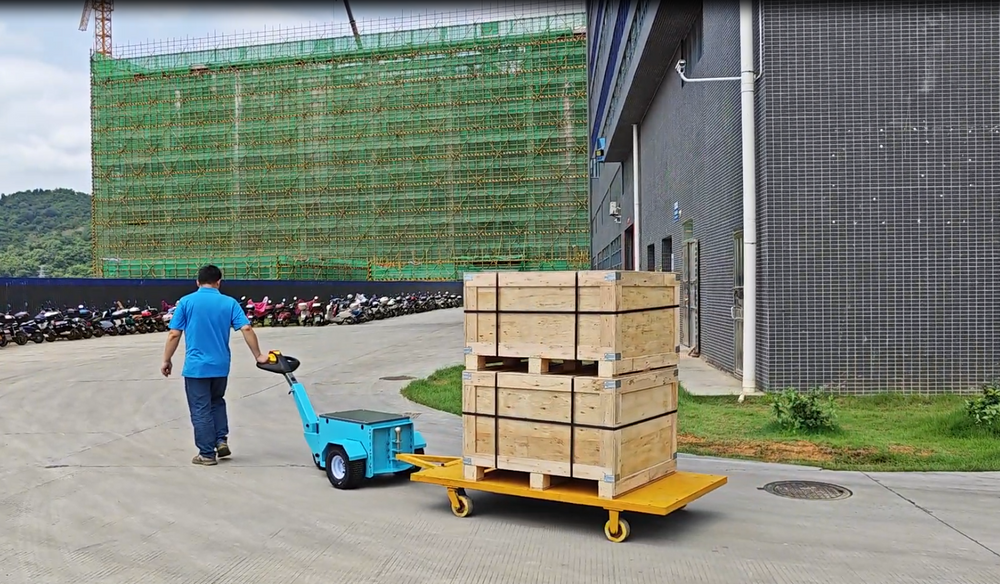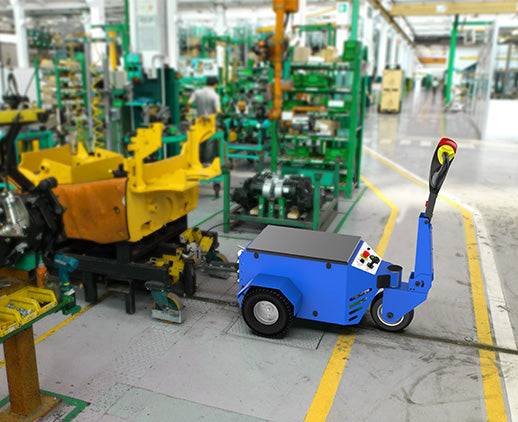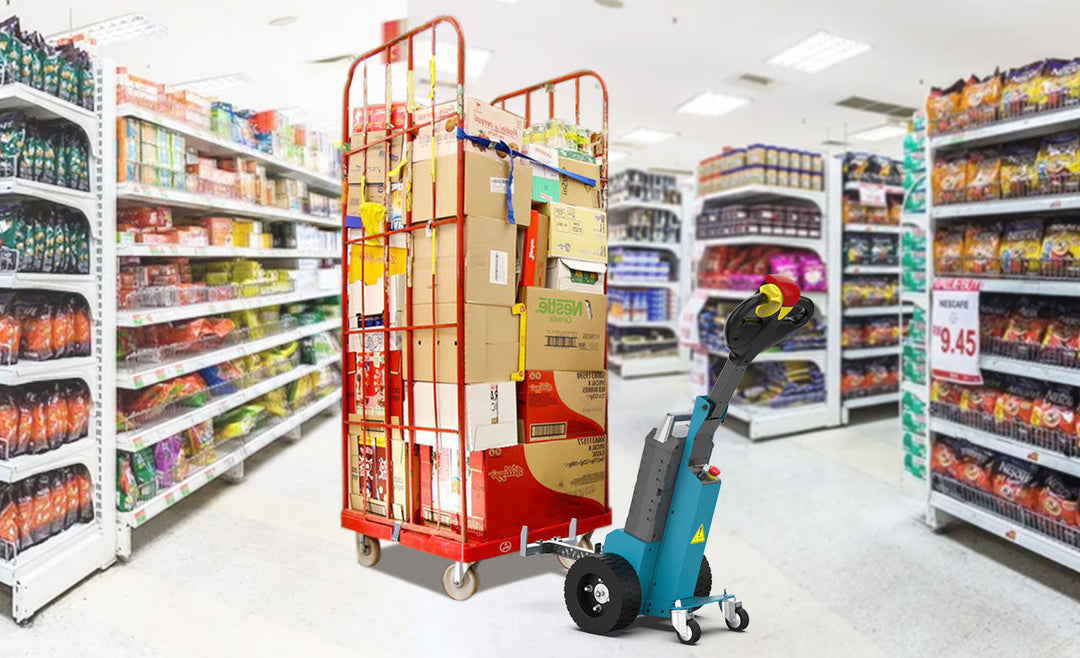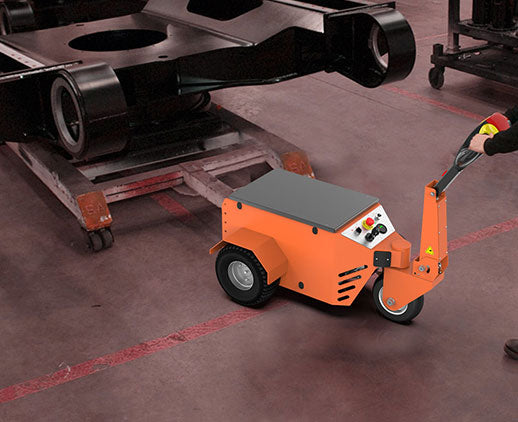What Are the Benefits of Switching to a Battery-Powered Electric Tug in Your Operations
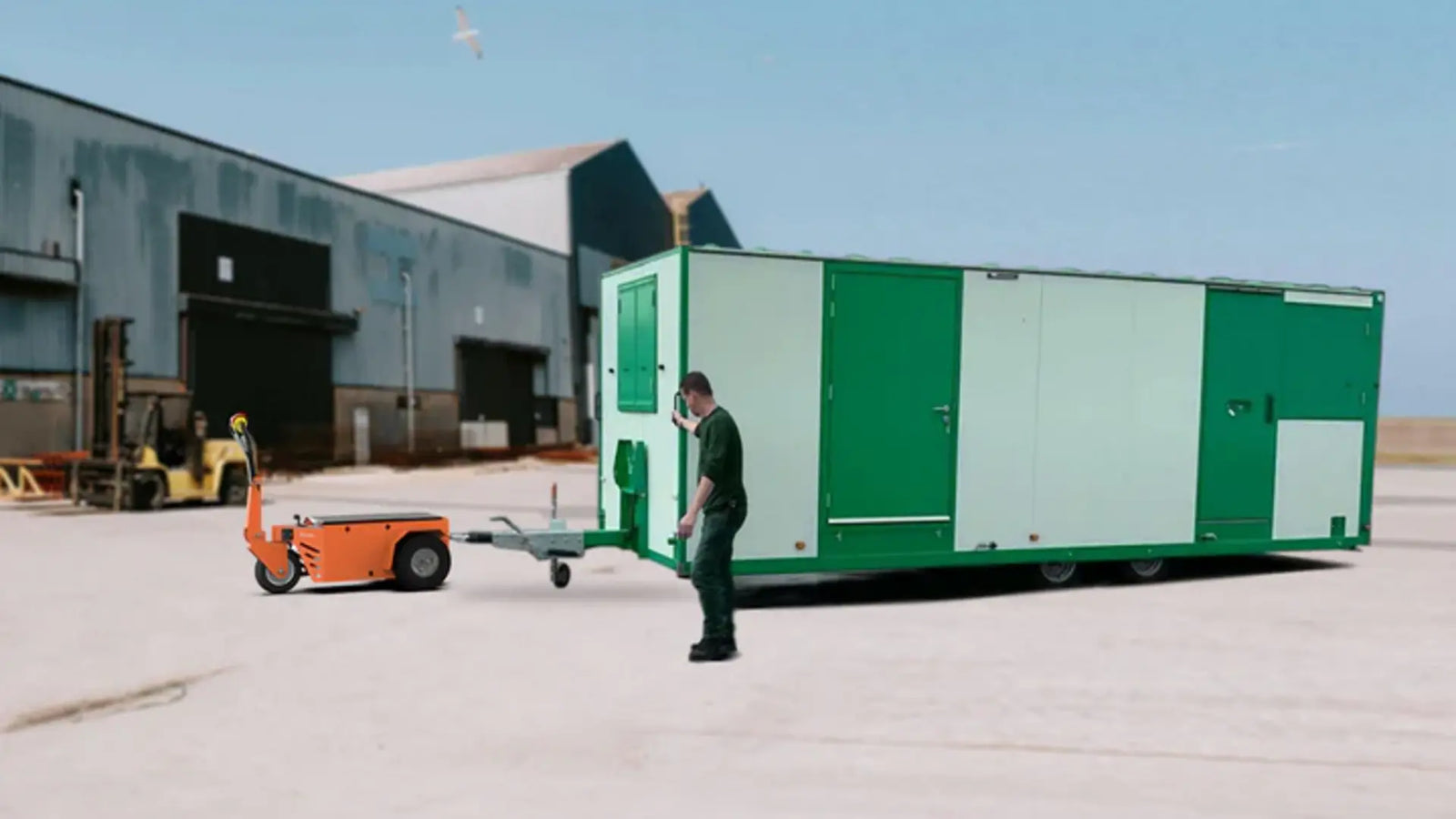
By using battery power, you can lower fuel costs and reduce emissions, improve efficiency, and provide employees with a quiet and safe environment, offering better support for a company's green transformation.
Lower fuel costs
The battery-driven electric tug reduces dependence on expensive fuel and, therefore, will continue to decrease in operating cost pressures. Relies more on electricity; hence, the risk of fluctuation in price is relatively lower. On corporate budgeting, one can do more flexible plans based on the energy expenses being stable. Most of the decision-makers always wanted to concentrate the funds on critical operations. High fuel consumption may yield more in financial return if minimized. In the long run, electricity implies a more manageable level of expenses, avoiding the drainage of funds because of increases in raw material prices. In most operational contexts, the economic benefits derived from electric tugs bring about a remarkable reduction in costs. The financial burden on operators can be evenly offset.
Battery technology enhancement has further increased charging efficiency, reduced waiting times, and sped up work rhythms. Meanwhile, laying charging facilities into a variety of environments is averting from the cumbersome traditional processes of refueling; the prices of the former are relatively stable, which will conveniently keep long-term cost planning compatible with the refined demands in management. The investments, too, are pretty manageable: both leased and purchased equipment are capable of a decent return. Some companies would like to charge in the valley for avoiding peaks in usage to get lower rates. A dispatcher has only to plan the charging sessions according to work plans so that the equipment and energy costs provide extra benefits by exploiting peak and off-peak pricing.
Digital methods can be employed for tracking energy consumption by electric tugs, thereby matching operating hour-load level combinations to achieve a better configuration. Energy management software can enable more accurate demand forecasts and prevent the incidence of wasteful consumption. Accurate data logs facilitate the emergence of potential areas for improvement and help teams control input-to-output ratios more effectively. Electricity can be sourced from renewable sources, reducing reliance on fossil fuels like petroleum. Companies can enjoy further deductions or subsidies in total costs with a combination of local policies and incentives. In this way, the overall planning can keep the operation steady without excessive costs in certain high-cost periods.
Investment in electric tugs can be made through installments or by leasing. Compared to maintenance costs, the initial spending does not place an excessive burden. Later in the operations, electricity costs will be relatively stable to help companies estimate the budget for each phase. A long return-oriented finance department will have a better balance during the investment cycle. The related research reports make it very clear how much has been saved for upgrading of equipment or strengthening other areas. Some companies invest that surplus in developing their workforce to enhance professional expertise. Operators focus on researching technology in preparation for future market competition.
If the tugs with batteries are combined with solar or wind power systems, it further reduces reliance on the conventional grid. Some companies maintain independent energy storage facilities storing surplus electricity when workloads are light. These may be quickly tapped into at peak periods to supply operational needs. Whether for small factories or large terminals, it would be possible to find a suitable solution for energy uses. This way, companies show an energy-saving image in external presentations, which will draw more potential customers and partners. The economic model will appeal to investors in the long term. Companies are better armed with financial models that include green solutions, with more resilience under competitive conditions.
Cleaner, greener moves
Electric tugs do not generate any exhaust fumes during operation, reducing the amount of air pollutants released. People in the surrounding environment and those on duty inhale cleaner air, reducing health risks. Many regions have put in place strict rules on emissions, and the use of zero-exhaust machinery helps to achieve such regulatory requirements. It avoids harmful particulate matter emitted by diesel or heavy oil, keeping waterways cleaner. The ecosystem near docks and harbors sees noticeable improvements. With international organizations raising standards for cleaner waters, more operators are being encouraged to adopt zero-emission technologies. Electric tugs mean going down in carbon emissions, hence aligning with environmental project assessments.
Zero-emission equipment lessens the risk of oil pollution in water operations. In the past, fuel leaks used to occur during refueling or maintenance and thus contaminated water, affecting aquatic life. Switching to electric tugs significantly reduces oil spill concerns and better protects water quality. Authorities in charge of canals, lakes, or bays prefer greener modes of transport to preserve the tourism and fisheries sectors in those areas. For the companies themselves, going green can garner positive public perception, improving brand value. Society's emphasis on eco-friendly production keeps increasing, so proactive efforts like these receive wider recognition and support.
When some ports introduced electric tugs, local air and water monitoring data tended to rise. There is no more strong smell in the mooring, and noise complaints decreased. These projects tend to be welcomed more positively by local communities and environmental groups, extending the possibilities of cooperation with them. Besides, the onshore matching charging makes the day-to-day operation more orderly, shorelines free of over storage of fuel or waste. The local government may draft more incentive-based policies to draw more business towards greener methods. Clean operations are an integral part of regional development intergenerationally.
Many research institutions are studying the amount of emissions reduced by electric tugs and monitoring ecological restoration outcomes. If marine habitats enjoy a friendlier environment, biodiversity can increase gradually. Using electricity on ferries and cargo ships opens new possibilities for comprehensive maritime transformation. Business feels that if combined with solar and wind power, sustainable approaches have wide practical potential.
The cleaner work model also minimizes the need for personal protective equipment. Where fuel vapors frequently caused employees to don respirators or take special training in the past,. With electricity, safety training and health protection costs are reduced. The comfort of employees increases with a more humane corporate culture. While clean energy continues to develop, many manufacturers focus on developing larger-capacity and longer-lifespan batteries. Later, a minor modification of the equipment structure allows the operations to scale up or upgrade swiftly with positive impacts on both the environment and the economy.
Reduce noise, boost comfort
Electric tugs in operation make only comparably small noise in their engines. The crew need not yell over earsplitting roars; therefore, communication becomes effective. A quieter ambiance means less fatigue whereby people do not get that stressed working for more hours in a day. Onsite residents raise fewer noise complaints about the noise from docks and inland waterways, resulting in improved relations in the community. Working on equipment does not call for working around a noisy, loud cacophony of a high-revving engine, hence more safety and comfort overall.
Traditional engines come with harsh vibrations and rumbling sounds; many workers endure high-noise environments for long periods, risking hearing damage. Electric tugs use electric motors, producing far less vibration in general. Quieter operations help protect employee well-being and simplify workflow management. For operators needing nighttime shifts, reduced noise avoids conflicts and possible costs for soundproofing. Shipping firms can emphasize this as a plus in branding and thus get more positive public response.
Tugboat dispatchers, when directing vessels to berth or depart, often have to speak a lot with different entities involved. Noisy operations could mask the instructions and impede work efficiency. In such cases, electric tugs ensure smooth communication, reducing misunderstandings. Safety officers or pilots could also correctly hear surrounding cues for faster reaction times in case of emergencies. For special missions, electric tugs may also be equipped with more sensitive sonar and communication devices that would greatly broaden their application scope.
Less noise usually increases working comfort by lowering fatigue and improving the quality of rest. HR departments, while assessing employee benefits, don't have to spend that much on noise allowances or occupational disease prevention. Quieter conditions make training and drills easier to conduct. Managers often like to build a positive work atmosphere with safety and health safeguarded. Even external visitors or partners who come for an inspection will also have a good feeling about the orderly and quiet job site.
High noise contributes to confusion in the ports where several vessels operate together and raises the chances of collision or accidents. Electric tugs reduce the background noise and improve coordination in case of joint operations. Personnel operating these do not have to set communication devices at maximum volume, yet hear the commands as clear as possible. Electric tugs will also fit into areas with strict noise control. In conjunction with the function of automatic control systems, the number of interference noise is even fewer. A quiet and efficient working experience is gradually becoming a new industry standard.
Simplify maintenance tasks
Electric tugs get their main power from an electric motor and battery system, with fewer mechanical parts compared to traditional engines. The elimination of items such as engines and gearboxes greatly reduces failure points. Maintenance crews focus on the condition of the batteries and upkeep of the motors, making the processes of repair more clear. Common tasks such as changing engine oil or filters are removed. Overall maintenance frequency decreases, saving considerable labor and costs for companies.
Digital management of maintenance documentation is way easier. Operating parameters, such as motor and battery, can be transmitted to a control center in real time for remote troubleshooting by technical teams. In case any abnormality is spotted, a repair plan is prepared well in advance to avoid any downtime. Long-distance trips are very important in forecasting remaining battery power. Most repairs can be covered with well-planned spare parts and staff. More transparent inspections further lower the management costs.
Diesel engines of the traditional type often experience clogged injectors, worn piston rings, or failures in the cooling system-all of which can be time-consuming to diagnose. Electric tugs, on the other hand, depend on electronic components; it is enough to regularly check cables and connectors, which cuts failure rates substantially. The swapping out of battery modules is usually simpler than overhauling an engine, causing less disruption to normal operations. The control systems and battery characteristics should be known to the maintenance crews who apply routine precautions to maintain stability. If the firmware is capable of being updated remotely, then less complex manpower is required.
Large-scale operations often favor the use of quick-change battery tray designs. If one battery reaches a low charge, an entire pack is replaced so work can continue rather than wait for the extended procedures of refueling or servicing an engine. Centralized charging areas set up in workshops or docks would be enough for maintaining the health of its batteries. Electric motors phase out grease and carbon deposits that characterize engine rooms. Cleaning and upkeep is easier, hence reducing workload for employees raising their job satisfaction.
If a company implements an automated inspection platform, maintenance planning for electric tugs becomes more precise. The system continuously monitors voltage, current, and temperature, sending an alarm when these exceed threshold levels. A prompt response prevents small-scale problems from blowing out of proportion. Parts supply can also be more reasonably controlled with data-based decisions, thereby making warehouse spending more appropriate. Keeping equipment stable improves transport capacity and scheduling. Simplified repairs free human resources for more creative tasks.
Safer for your team
Electrical tugs do not produce pungent exhaust during operation; hence, they provide cleaner air for both the enclosed spaces and the surroundings. Traditional fuel-powered units emit carbon monoxide and sulfur dioxide, creating respiratory health damage. Working in machine rooms or on deck, crew members are much more comfortable when the drives switch to battery power, reducing chances of feeling unwell. Improved health conditions not only affect the individuals but spur the morale of the whole team. Those on docks or along shipping lanes are less exposed to oily fumes.
Electric tugs have a stable start of the motor, avoiding serious shaking and reducing operational risks. Diesel engines sometimes entail open flames or leaks either in the time of ignition or refueling, raising chances of fire or explosion. Installed batteries make the work routine easier and reduce the rate of accidents from the very beginning. Lessons on safety can focus on handling electric machinery and batteries, and the training will be more orderly and efficient. For nighttime or bad weather crews, steady power cuts sudden breakdowns.
If the hull vibrates less, worker fatigue diminishes considerably as well. Common cases of lumbar or neck strain and discomfort in the joints can be avoided. Medical staff investigating occupational diseases no longer face complicated noise or exhaust factors. A healthier workforce will remain focused on key assignments, reducing accidents caused by distraction. Orders and responses are more accurate in a quieter environment, further reducing unexpected events.
An automatic on-board monitoring system on the electric tugs can transmit, in real time, battery and power output signals to enable fast decision-making by managers. In case of abnormalities, it notifies maintenance personnel to intervene and reduces chances of major breakdowns. Fire-fighting and emergency response programs may also be allowed to discard some of the measures necessary in the case of conventional fuel equipment. Elimination of fuel spill and tank fire cases saves the crew and vessel from destruction. As risk levels decrease, insurance premiums may become more affordable, which can indirectly favor the enterprise.
Starting at low temperatures is easier with electric power, without preheating or additional anti-gelling additives. Diesel engines often suffer from fuel clots in colder conditions, resulting in stalling or a lack of power. If the tug cannot start on time, rescue missions or critical freight handling may be delayed. Electrical systems seldom experience such problems, which provide better control over scheduling. Cable connections and battery warming features keep cold-weather operations under control. This proves that electric tugs bring a more secure work experience by reducing weather-related safety concerns.
Enhance operational efficiency
Electrical tugs provide more sensitive torque output and fast acceleration, which are just what one needs for fine maneuvers in confined water or a complicated docking area. It is necessary only to press the control lightly, and the tug reaches immediately the required power. Agility in berthing shortens loading/unloading times and enables more vessels to follow the schedule. Consequently, the storage yards or berths are better utilized, as well as linkages in transport chains are improved. And quite often crew members enjoy working with such flexible machines.
Real-time monitoring and data feedback from electric systems are extremely important for dispatch optimization. The control center will be able to view each tug's status, power level, and location and formulate better shift plans and routes. If urgent cargo needs priority, the nearest device is assigned promptly. Matching manpower and resources effectively reduces idle runs and waiting to raise the efficiency of the whole system. Unified coordination lets the operators track progress more precisely, limiting bottlenecks.
Smooth acceleration from electric tugs also saves towed goods. While older engines can surge or power down when gear is switched or when speeds change, this could cause slippage of cargo or its collision. Electric motors exhibit output at very consistent levels, minimizing the likelihood of damage. Claims go down, while relations with the client improve. Electric tugs seldom power drop-off even on very long shifts to keep operations running inside highly complex environments. Dock personnel really appreciate this level of predictability.
Many companies rely on tugs to make short shuttle trips between production and storage, and an electric approach combined with automated scheduling forms a seamless logistics chain. A conventional fuel unit might pause either to refuel or to go in for maintenance and thus delay critical shipments. Electric setups need to charge only at suitable times and often take advantage of off-peak rates to keep costs in check. Automation or semi-automation is also possible whereby the tugs can travel independently along fixed routes with decreased manpower. When it is smooth, then inventory turnover and stocks are maintained more effectively.
Globalization has increased the degree of competition, thereby unveiling opportunities to gain vital advantages in pricing and efficiency through companies by reducing work time, hence the need for the fastest deployment and stable performance by electrical tugs in large projects. This effective model will attract more shippers to the dock service providers and will facilitate increasing their market share. Indeed, support services will improve, such as smart berth management and an integrated scheduling platform. Once economies of scale appear, the whole operating system will be more competitive, enjoying a good reputation among industry players.




